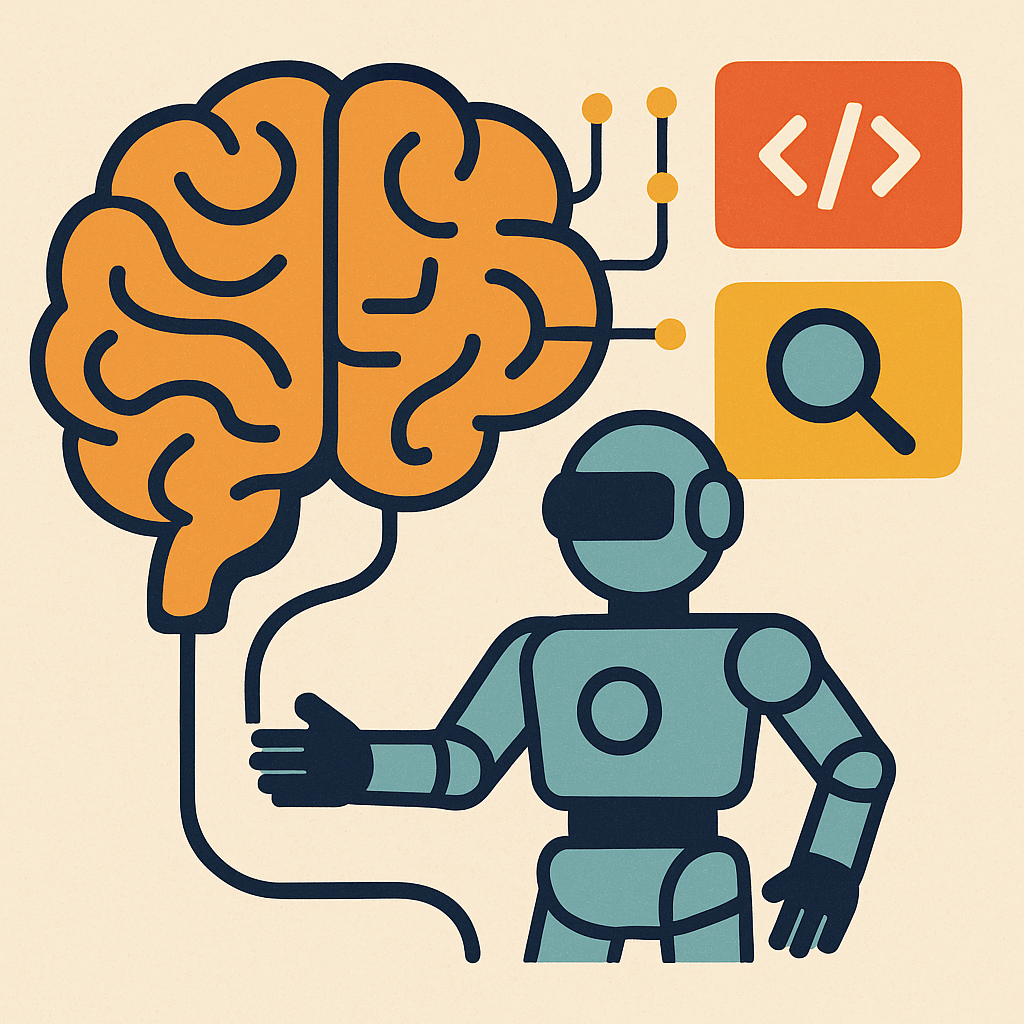What Are AI Agents? How They Work and Why They’re the Future of Artificial Intelligence

From fire to flight, the human journey has always been about inventing tools to extend our reach. In the age of artificial intelligence, we are now building something more powerful than any tool before: intelligent agents that can act, reason, adapt, and learn. Welcome to the era of AI Agents.
Human evolution gave rise to a brain capable of reasoning, sensing the environment, planning actions, and learning from experience. In parallel, AI has evolved from classic machine learning, which focused on pattern recognition, to large language models (LLMs) that understand and generate human language. From there, we moved to generalist models that handle diverse tasks, and now to reasoning engines capable of planning and solving complex problems. However, even the most advanced models are still limited. They lack real-world interaction, memory, and autonomy. That is where AI agents come in.
An AI Agent is a system that combines the powerful reasoning of LLMs with the ability to perceive, plan, act, and learn in a loop. It is designed to operate in dynamic environments with a specific goal in mind and to pursue that goal autonomously, without constant human guidance. In simple terms, if an LLM is the brain, then an agent is the brain along with a body, senses, and limbs.
To understand how agents work, think of them as having three parts. First is the model, which serves as the brain, responsible for processing input, applying reasoning, and planning. Examples include Google’s Gemini or Meta’s Gemma. Second are the tools, which act as limbs and senses, allowing agents to interact with the world. These might include search engines, APIs, or databases. Lastly, the orchestration layer functions as the nervous system and coordinates how the agent observes the world, thinks, decides, and acts repeatedly until the goal is achieved. Frameworks like ADK, CrewAI, and LangGraph support this loop.
Why do we need agents if we already have powerful models? Because models are confined to their training data and perform single-shot inferences. They lack memory, tool access, and decision-making continuity. Agents overcome these limitations. They extend knowledge through tools, manage context across sessions, integrate with real-world functions, and carry out complex multi-step plans. In essence, they bring cognition and action together.
A helpful way to visualize this is through a kitchen metaphor. Imagine a chef taking a customer order, checking the pantry, planning the dish, cooking step by step, and adjusting along the way. That is exactly how an AI agent works: gathering information, planning internally, acting with tools, and refining actions based on feedback, all in pursuit of a defined goal.
Agents are useful in any domain where complex, multi-step problem-solving, interaction with real-world systems, and dynamic adaptation are required. This includes scientific research, market analysis, customer service, personalized learning, wellness guidance, data entry, and automated report generation. On the other hand, agents may not be appropriate for high-risk workloads where deterministic outcomes are safer, or for tasks that are better served by simpler rule-based or traditional machine learning models.
That said, deploying agents comes with challenges. These include managing costs and token usage, designing and maintaining useful tools, enabling secure agent-to-agent interactions, evaluating agent performance, and ensuring transparency through observability and tracing. Security and deployment at scale are also major concerns. Moreover, agents exist on a spectrum from fully autonomous to human-in-the-loop, and the right level of control depends on the task.
So, to agent or not to agent? If your workflow involves unpredictable inputs, complex decisions, or sequential logic that benefits from reasoning and adaptability, then agents are not just the future. They are already the present. We are no longer just building smarter models. We are building intelligent systems that think, act, and improve.